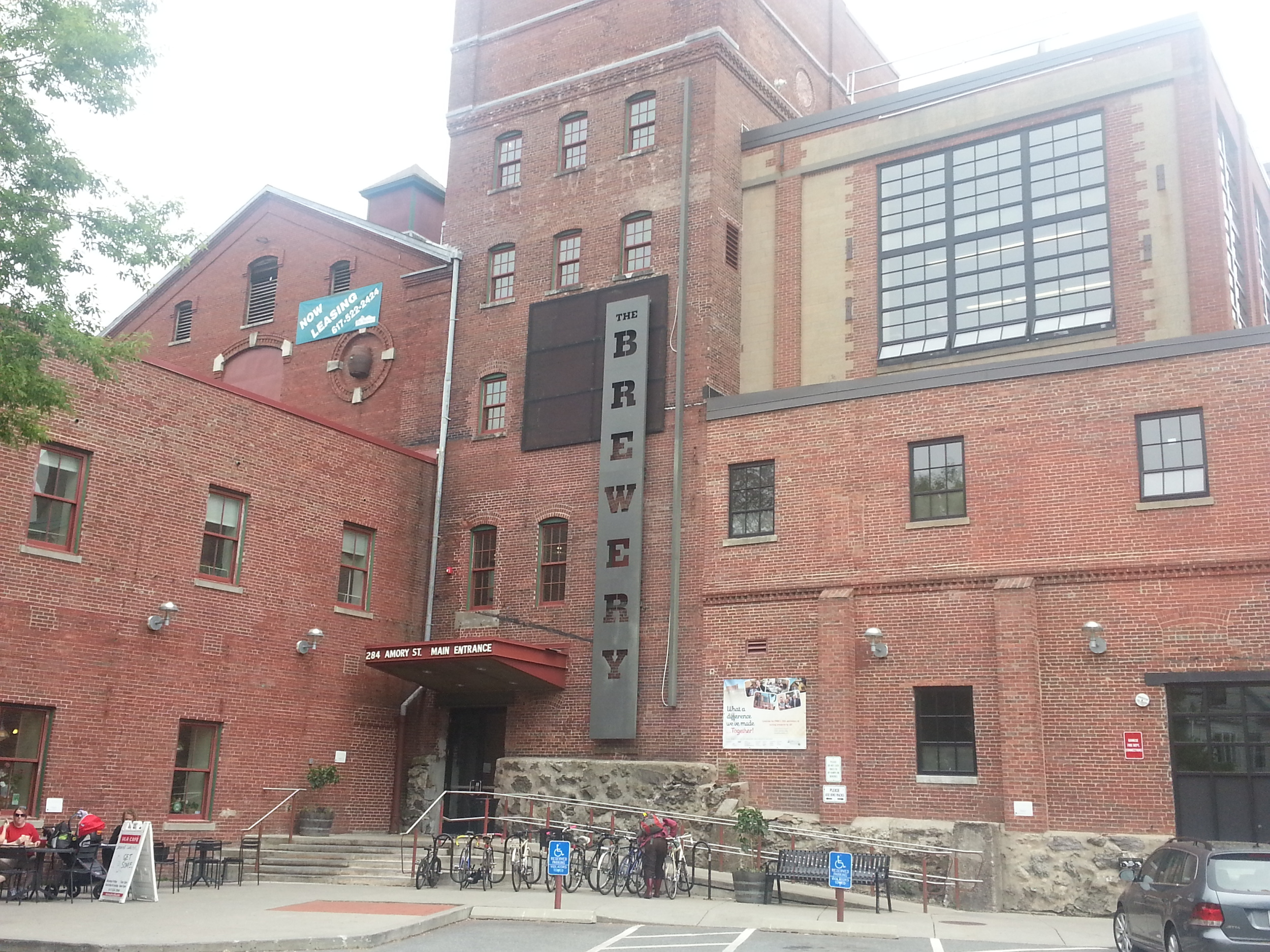Reclaiming America’s Cities and Neighborhoods
The Brewery in Boston's Jamaica Plains Neighborhood is an amazing example of hard-fought long-term work by the local CDC to transform a neighborhood liability into a community center employing over 500 people and supporting dozens of small businesses. CDBG funds were critical to its success. (Photo: MZimmerman 2013)
Recently I traveled to Boston and toured some of the neighborhoods that the City and its many community development corporations (CDCs) have transformed over the past three decades. Seeing the reclamation and revitalization of places like Chinatown and Jamaica Plains Neighborhood one cannot help but feel inspired.
I remember visiting these places back in my college days (more than a few years ago). They were tough, gritty and dangerous – exciting to a young Gen X’er seeking out punk music venues, but not a place that was attracting families, new businesses or maintaining property values. Today these same neighborhoods – and many others like them – have turned a corner thanks to the tireless efforts by local activists, community leaders, and committed staff in the public sector. Think about your own city and the transformation that has occurred over the last 25 years.
Jane Jacobs eloquently reminded her generation that America’s cities were too important a legacy to forget. The following generations have worked to restore the urban wounds caused by redlining, segregation, interstates, urban renewal and other policies that intentionally or accidentally disseminated neighborhoods especially those once home to vibrant minority communities.
Cities are evolving, dynamic organisms. This is what makes them so incredible to those of us in the planning and design professions. They are a constantly changing experiment, but what I love is what they also say about American ingenuity and tenacity. No other country abandoned their cities as fervently as in the US, but no other country can show the types of successful transformation of urban neighborhoods particularly in the face of relatively minor federal support.
These stories are too seldom told. Literally thousands of places have been reclaimed, block by block through dedicated financial and human capital. This work is not easy, nor does it happen overnight. Rather it requires hard work, innovation and entrepreneurship, leadership and vision. It also requires money.
Many of our hardest hit communities suffer from environmental contamination, from blight and neglect, from out-dated infrastructure, from unsafe or unhealthy housing, or other challenges that must first be overcome before the market can return. In many instances, relatively modest amounts of federal funding leveraged larger pots of local and private dollars to transform and unlock new markets. Among the most important federal resources have been those from the US Department of Housing and Urban Development (HUD).
HUD’s Community Development Block Grant (CDBG) program, established in 1974, is unique in providing a flexible funding source directly to cities. CDBG supports urban revitalization and economic investment efforts uniquely tailored to local needs and opportunities, often through low-interest, fixed asset gap financing and loans. It has also leveraged more private sector investment than almost any other federal program. To cite just one example, between 2005 – 2010 the state of Ohio used CBDG funds in 63 communities creating over 2,000 new jobs, generating over $4 million in new tax revenue and leveraging non-CBDG capital investments by a ratio of $18.5 to $1.
And yet, despite this success, its
funding has consistently been cut. In
the past three years alone, the CDBG program has been reduced by 21%. Once again the House of Representatives is proposing further draconian cuts beyond this: a classic federal case of taking a penny-wise, pound foolish approach to budget reduction.
“Because of direct federal CDBG dollars to local governments for community development, many cities across America have been able to complete projects that once seemed unimaginable. This is not just a big city, big money program. CDBG also helps some of America’s smallest cities. The success of the program lies in its flexibility. Allowing local governments to create projects that fit their city’s needs enables them to leverage private sector capital to complete projects with a public purpose. From citizen donations, to bank loans to private investments, it is clear that CDBG money bears a sense of investor confidence and personal hope.” – Luke Lindberg for National League of Cities
Documented in a new publication by the Brookings Institution, poverty is
increasing in America's suburban communities at an alarming rate. Today, more people
live below the poverty line in the suburbs (16.4 million) than in central cities
(13.4 million). We cannot afford to cut federal
programs like CDBG that have been shown to make a real difference in tackling
these challenges and unlocking private capital. Now more than ever, we need to embrace the
positive changes that have occurred in urban neighborhoods, see what lessons
are applicable to suburban communities, and rely again on American ingenuity
and tenacity to tackle this generation’s community development challenges. And yes, to do this also take money. Let's make sure that effective federal programs like CDBG survive the current Congressional budget debates.

